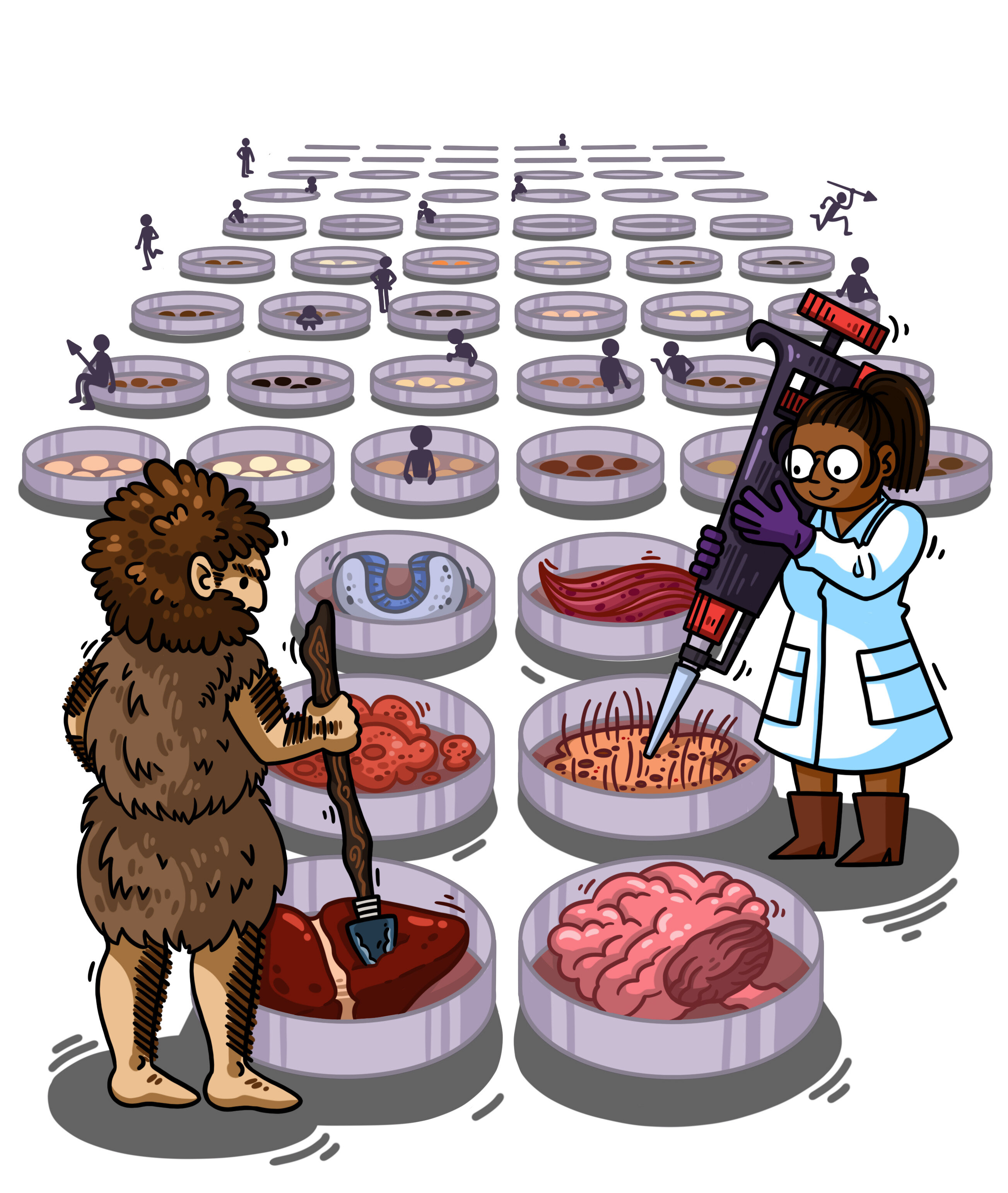Studying the Neandertal DNA found in modern humans using stem cells and organoids
Date: 1.7.2020
Protocols that allow the transformation of human induced pluripotent stem cell (iPSC) lines into organoids have changed the way scientists can study developmental processes and enable them to decipher the interplay between genes and tissue formation.
 Now, investigators are taking this technology and applying it to study the developmental effects of Neandertal DNA.
Now, investigators are taking this technology and applying it to study the developmental effects of Neandertal DNA.
"Using iPSC lines to study the functions of archaic human DNA is an untapped but very interesting approach," says senior author of the Max Planck Institute for Evolutionary Anthropology in Germany and the University of Basel in Switzerland. "No one has ever been able to look at the role Neandertal DNA plays during development."
Studies have found that about 2% of the genomes of modern humans from outside Africa are composed of Neandertal DNA. This archaic DNA is a result of mating between the two groups tens of thousands of years ago.
Camp's team used five cell lines to generate brain organoids and generated single-cell RNA sequencing data to analyze their cell composition. They showed that this transcriptomic data could be used to track Neandertal-derived RNA across developmental processes.
"This is a proof-of-principal study showing that you can use these resources to study the activity of Neandertal DNA in a developmental process," Camp says. "The real challenge will be scaling up the number of lines in one experiment, but this is already starting to be possible."























